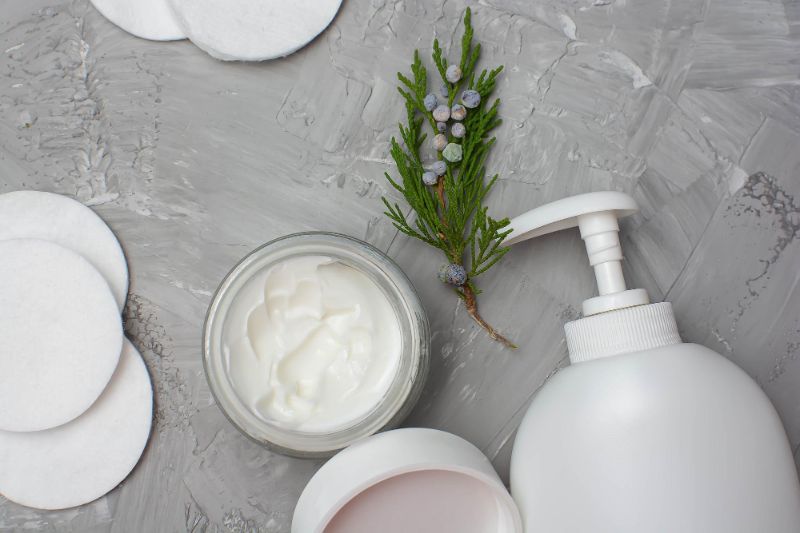Dyshidrotic eczema, also known as dyshidrosis, is a painful skin condition that affects millions of people around the world. It is distinguished by the appearance of small, itchy blisters on the palms of the hands and soles of the feet. Understanding dyshidrotic eczema and exploring effective treatment options can provide much-needed relief, even if it can be frustrating and persistent. In this comprehensive guide, we’ll look at the causes, symptoms, and various treatment options for dyshidrotic eczema, as well as what to do if it doesn’t go away.
Understanding Dyshidrotic Eczema
Dyshidrotic eczema is a type of eczema characterized by the sudden appearance of tiny blisters, often accompanied by itching and discomfort. These blisters can be filled with clear fluid and typically occur on the hands and feet. While the exact cause of dyshidrotic eczema remains unclear, it is believed to be influenced by a combination of factors, including:
- Skin Barrier Dysfunction: Dyshidrotic eczema, like other types of eczema, can be caused by a compromised skin barrier, which allows irritants and allergens to penetrate the skin more easily.
- Genetic Predisposition: Dyshidrotic eczema appears to have a genetic component, as it frequently runs in families.
- Environmental Triggers: Certain environmental factors, such as allergens, metals (such as nickel), and stress, can cause or worsen dyshidrotic eczema flare-ups.

Dyshidrotic Eczema Common Symptoms
Dyshidrotic eczema is a condition characterized by a distinct set of symptoms that, when recognized early, can lead to more effective intervention and management. These common symptoms serve as telltale signs of the condition:
- Small, Fluid-Filled Blisters: One of the hallmark symptoms of dyshidrotic eczema is the appearance of tiny, clear, fluid-filled blisters. These blisters typically manifest on the palms of the hands, fingers, toes, and the soles of the feet. They can be quite small but tend to cluster together, causing discomfort and itching.
- Intense Itching and Burning Sensations: The presence of these blisters is often accompanied by intense itching and burning sensations. This itching can range from mildly irritating to highly distressing, leading to a strong urge to scratch the affected areas, which should be avoided to prevent exacerbation.
- Dry, Cracked, and Scaly Skin: Over time, the blisters may rupture, leading to the development of dry, cracked, and scaly skin in the affected areas. This can cause further discomfort and may result in open sores if not properly managed.
- Redness and Inflammation: The skin around the blistered areas tends to become red and inflamed. This redness and inflammation can extend beyond the immediate vicinity of the blisters, affecting the overall appearance and comfort of the affected skin.
Dyshidrotic Eczema Treatment
Managing dyshidrotic eczema requires a multifaceted approach tailored to the individual. Here are some important treatment components:
- Topical Steroids: Dermatologists often prescribe topical corticosteroids to reduce inflammation and itching. These medications should be used as directed, as long-term and excessive use can lead to skin thinning.
- Emollients and Moisturizers: Regularly applying emollients and moisturizers can help maintain the skin’s barrier and prevent dryness. Opt for fragrance-free, hypoallergenic options.
- Avoiding Triggers: Identify and avoid potential triggers that worsen your dyshidrotic eczema. This may include certain foods, metals, or stressors.
- Prescription Medications: In severe cases, your dermatologist may recommend oral corticosteroids or immunosuppressants to manage symptoms.
- UV Therapy: Some individuals find relief from dyshidrotic eczema through ultraviolet (UV) light therapy administered under medical supervision.
- Wet Dressings: Soaking affected areas in cool water and applying wet dressings can help soothe itching and inflammation.

Why Is My Dyshidrotic Eczema Not Going Away?
Dealing with persistent dyshidrotic eczema can be frustrating, but there are several reasons why it may not be improving:
- Incomplete Treatment: If you haven’t followed your dermatologist’s prescribed treatment plan consistently or have stopped using medications prematurely, your condition may not improve.
- Unidentified Triggers: It’s possible that you haven’t identified all the triggers that worsen your dyshidrotic eczema. Keeping a detailed journal of flare-ups may help pinpoint hidden culprits.
- Stress: Stress is a known trigger for eczema, including dyshidrotic eczema. High stress levels can exacerbate symptoms, so managing stress through relaxation techniques or counselling can be beneficial.
- Underlying Conditions: Sometimes, dyshidrotic eczema is a symptom of an underlying health issue, such as allergies or fungal infections. If your symptoms persist, consult your dermatologist for further evaluation.
- Changes in Weather: Seasonal changes and weather conditions can affect eczema. You may need to adjust your skincare routine based on the climate you’re in.
- Skin Care Products: Using skincare products with harsh chemicals, fragrances, or allergens can irritate your skin and hinder the healing process. Opt for gentle, hypoallergenic products.
When dealing with persistent dyshidrotic eczema, it’s critical to see a dermatologist for a thorough examination. They can assist in determining the underlying causes and developing a treatment plan that is tailored to your specific needs.
Consulting an Eczema Dermatologist
A dermatologist specializing in eczema is your best ally in managing dyshidrotic eczema effectively. Here’s what you can expect when you see an eczema dermatologist:
- Diagnosis: Your dermatologist will perform a thorough examination, review your medical history, and may conduct tests to rule out other conditions.
- Customized Treatment Plan: Based on your diagnosis, they will create a personalized treatment plan that may include medications, lifestyle adjustments, and skincare recommendations.
- Education: An eczema dermatologist will educate you about your condition, triggers, and proper skincare practices to prevent future flare-ups.
- Follow-Up: Regular follow-up appointments allow your dermatologist to assess your progress, make necessary adjustments to your treatment plan, and address any concerns.

Dyshidrotic Eczema Final Thoughts
Dyshidrotic eczema can be a challenging condition to manage, but with the right approach, relief is possible. Understanding the causes, recognizing common symptoms, and seeking the guidance of an eczema dermatologist are key steps in your journey to healthier, happier skin. Remember that managing dyshidrotic eczema is a partnership between you and your healthcare provider, and with patience and persistence, you can achieve long-lasting relief from this bothersome skin condition.
FAQs
- Are there natural remedies for dyshidrotic eczema?
Some individuals find relief with natural remedies like oatmeal baths and coconut oil, but their effectiveness varies.
- Is there a link between dyshidrotic eczema and allergies?
Allergies may contribute to eczema flare-ups in some individuals, but not all cases are allergy-related.
- Can children develop dyshidrotic eczema?
Yes, children can develop dyshidrotic eczema, although it is more common in adults.
- Is dyshidrotic eczema worsened by exposure to water?
For some people, frequent exposure to water and detergents without proper protection can exacerbate symptoms.
